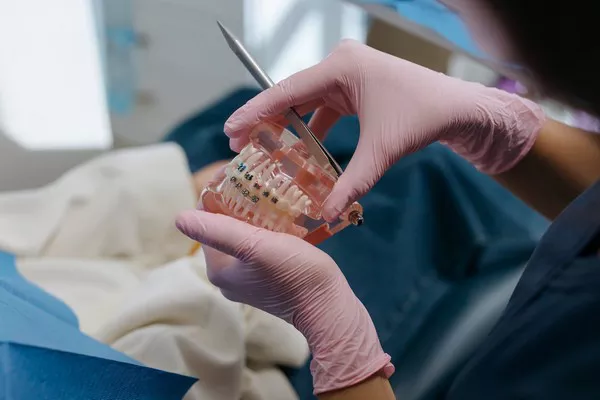Gum bleeding can be an alarming symptom, causing concern for individuals who experience it. One of the primary causes of gum bleeding is gingivitis, a common form of gum disease characterized by inflammation of the gums. In this article, we will delve into the underlying reasons why gingivitis leads to bleeding gums.
Understanding Gingivitis
Gingivitis is an early stage of gum disease caused by the buildup of plaque, a sticky film of bacteria that forms on the teeth. When plaque is not adequately removed through regular brushing and flossing, it can irritate the gums, leading to inflammation. This inflammation triggers a series of events that contribute to the development of gingivitis.
Inflammation and Increased Blood Flow
When gums become inflamed, blood vessels in the affected area expand, leading to increased blood flow. This increased blood flow makes the gums more sensitive and prone to bleeding. The swollen and irritated gums may also appear red and feel tender to the touch.
Plaque-induced Damage
Plaque contains harmful bacteria that produce toxins, which further irritate the gums. Over time, these toxins can damage the gum tissue, causing it to become more fragile and susceptible to bleeding. Additionally, as plaque accumulates along the gumline, it hardens and forms tartar or calculus. Tartar acts as a rough surface that can scrape and irritate the delicate gum tissues, leading to bleeding.
Weakened Gum Tissue
Prolonged inflammation due to gingivitis can weaken the gum tissue. As a result, the gums may start to recede from the teeth, creating small pockets or gaps between the gums and tooth surfaces. These pockets provide an ideal environment for the accumulation of more plaque and bacteria, exacerbating the gingivitis and leading to further bleeding. If left untreated, this progression can eventually result in periodontitis, a more severe form of gum disease.
Poor Oral Hygiene Practices
Inadequate oral hygiene practices play a significant role in the development and progression of gingivitis. Failing to brush and floss regularly allows plaque to accumulate along the gumline, increasing the likelihood of gum inflammation and bleeding. Improper brushing techniques, such as using a toothbrush with hard bristles or applying excessive pressure, can also contribute to gum irritation and bleeding.
Risk Factors
Several risk factors increase the susceptibility to gingivitis and gum bleeding. These include:
Poor oral hygiene: Inconsistent or inadequate oral care routines can lead to bacterial buildup and subsequent gum inflammation.
Smoking: Tobacco use compromises blood flow to the gums, impairs the immune system’s response, and increases the risk of developing gum disease.
Hormonal changes: Hormonal fluctuations during puberty, pregnancy, and menopause can make the gums more sensitive and prone to inflammation and bleeding.
Diabetes: Individuals with diabetes have an increased risk of developing gum disease due to impaired immune function and reduced blood circulation.
Medications: Certain medications, such as blood thinners, can increase the likelihood of gum bleeding by interfering with the body’s clotting mechanisms.
Genetics: Some people are genetically predisposed to developing gum disease, including gingivitis.
Treatment and Prevention
Fortunately, gingivitis is reversible and can be treated with proper dental care. The following strategies can help manage and prevent gingivitis:
Good oral hygiene:
Brush your teeth at least twice a day, using a soft-bristled toothbrush and fluoride toothpaste. Floss daily to remove plaque from areas that your toothbrush cannot reach.
Regular dental visits:
Schedule regular check-ups and professional cleanings with your dentist to remove plaque and tartar buildup and monitor your gum health.
Healthy lifestyle choices:
Maintain a balanced diet, limit sugary foods and beverages, avoid tobacco use, and manage chronic conditions such as diabetes.
Adequate hydration:
Drinking plenty of water helps promote saliva production, which helps neutralize acids and wash away food particles, reducing the risk of plaque formation.
Stress management:
High-stress levels can compromise the immune system and contribute to gum disease. Practice stress-reducing techniques like exercise, meditation, or engaging in hobbies.
Conclusion
Gingivitis-induced bleeding gums can be attributed to the inflammation, increased blood flow, plaque-induced damage, weakened gum tissue, and poor oral hygiene practices. By understanding these causes, individuals can take proactive steps to prevent and manage gingivitis. Maintaining good oral hygiene habits, seeking professional dental care, addressing underlying risk factors, and adopting a healthy lifestyle can help keep gums healthy, reduce inflammation, and minimize the occurrence of gum bleeding.
Related Topics:





























